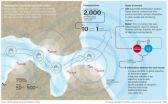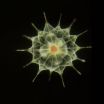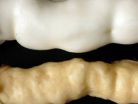(Press-News.org) PROVIDENCE, RI -- New research from Rhode Island Hospital found that reduced levels of brain-derived neurotrophic factor (BDNF), a protein in the brain that encourages growth of neurons, may be a trait marker for individuals with psychogenic non-epileptic seizures (PNES) (seizures that are psychological in origin). The findings are published in the October 4, 2010, issue of Neurology, the medical journal of the American Academy of Neurology.
Past studies have shown decreased levels of BDNF in the serum of patients with psychiatric disorders such as major depressive disorder and conversion disorders (a condition in which a patient displays neurological symptoms such as numbness or seizures when no neurological lesion or pathology is found). Children with epilepsy have been found to have increased levels of BDNF compared to healthy controls. Serum BDNF levels, however, have not been investigated in adult patients with epileptic seizures (ES). With this in mind, researchers from Rhode Island Hospital hypothesized that BDNF would differentiate between ES and PNES.
W. Curt LaFrance, Jr., MD, MPH, director of neuropsychiatry and behavioral neurology at Rhode Island Hospital, and assistant professor of psychiatry and neurology (research) at The Alpert Medical School of Brown University led the study of three groups of patients -- one group with confirmed PNES, one group with ES and one healthy control group. The patients were also screened for comorbid depression as well, as past studies have suggested that chronic antidepressant use increases serum BDNF in patients with depression. More than half (8 of 13) of the patients in the PNES group were diagnosed with mild depression and were taking psychotropic (antidepressant) medication.
LaFrance and his fellow colleagues from Brown University found decreased levels of serum BDNF in both the PNES and ES groups when compared to the healthy control group. They believe these findings are significant in that it would be expected that the PNES patients taking antidepressant medications would have an increased level of serum BDNF. There were no significant differences in the levels of serum BDNF among all the patients in the PNES group, whether they were taking antidepressants or not. As a result, they believe that the reduced levels of BDNF may be a biomarker for PNES.
LaFrance says, "While BDNF may play a similar role in the pathophysiology of depression and PNES, the differential response of serum BDNF to antidepressants in patients with psychogenic nonepileptic seizures could highlight an important difference. The fact that antidepressants did not increase serum BDNF levels in our study and that there were no BDNF differences between patients with PNES who were depressed and those who did not have depression would suggest that serum BDNF might represent a trait marker of PNES. This could potentially be useful in understanding the pathophysiology of conversion disorders."
The study also found decreased levels of BDNF in adult patients with epileptic seizures, unlike the elevated levels found in children with ES. LaFrance comments, "This result is unexpected given the findings of elevated serum BDNF levels in children and the studies investigating BDNF concentrations in adult patients with ES."
LaFrance noted, "A model that may provide a unifying hypothesis on the decreased serum BDNF findings in both seizure groups may not be related to seizures -- it may be related to stress. Stress has been shown to lower BDNF, and a shared characteristic of patients with epilepsy or with nonepileptic seizures is fear of the next seizure. There may be great potential for biomarkers for PNES and for treatment response." Based on these findings, LaFrance and his colleagues propose that additional studies of BDNF levels take place to provide further insight into the role of BDNF in seizure disorders.
INFORMATION:
The study was funded by grants from Brown University and the Matthew Siravo Memorial Foundation. Other researchers involved in the study with LaFrance include, Edward Stopa, MD, and Andrew Blum, MD, PhD, of Rhode Island Hospital and The Alpert Medical School, and Katherine Leaver, BS, and George D. Papandonatos, PhD, of Brown University.
Founded in 1863, Rhode Island Hospital (www.rhodeislandhospital.org) in Providence, RI, is a private, not-for-profit hospital and is the largest teaching hospital of The Warren Alpert Medical School of Brown University. A major trauma center for southeastern New England, the hospital is dedicated to being on the cutting edge of medicine and research. The hospital receives nearly $50 million each year in external research funding and is home to Hasbro Children's Hospital, the state's only facility dedicated to pediatric care. It is a founding member of the Lifespan health system.
Researchers find possible biomarker to identify seizure-related stress
Findings may lead to a better understanding of the pathology of conversion disorders
2010-10-05
ELSE PRESS RELEASES FROM THIS DATE:
An intelligent system for maritime surveillance has been created
2010-10-05
The system has been designed by scientists from this Madrid university for Núcleo CC, a company which develops surveillance systems for the maritime and aeronautic sectors. The first prototype will be used in the near future in Cape Verde (Africa). Two types of sensors have been deployed there: a set of radars and a series of AIS (Automatic Identification System), which allow ships to communicate their position and give other relevant data on their location and characteristics. These two types of sensors offer complementary data which can be fused in order to obtain better ...
MBL scientists reveal findings of World Ocean Microbe Census
2010-10-05
LONDON, UK—After a decade of joint work and scientific adventure, marine explorers from more than 80 countries, including six scientists from the Marine Biological Laboratory (MBL), today delivered the first global Census of Marine Life revealing what, where, and how much lives and hides in the world's oceans. In one of the largest scientific collaborations ever conducted, more than 2,700 scientists spent over 9,000 days at sea on more than 540 expeditions gathering the data.
As a result of these efforts the scientists discovered that there may be up to 1 billion kinds ...
New report examines university management of intellectual property
2010-10-05
WASHINGTON — The system put in place by the Bayh-Dole Act of 1980 -- which gives universities significant control over intellectual property associated with the results of federally funded research at their institutions – has been more effective than the pre-1980 system in making research advances available to the public and spurring innovation, says a new report from the National Research Council. Nevertheless, the current system needs improvement, said the committee that wrote the report.
"The public investment in research universities has led to a great deal of new ...
Surprise: Scientists discover that inflammation helps to heal wounds
2010-10-05
A new research study published in The FASEB Journal (http://www.fasebj.org) may change how sports injuries involving muscle tissue are treated, as well as how much patient monitoring is necessary when potent anti-inflammatory drugs are prescribed for a long time. That's because the study shows for the first time that inflammation actually helps to heal damaged muscle tissue, turning conventional wisdom on its head that inflammation must be largely controlled to encourage healing. These findings could lead to new therapies for acute muscle injuries caused by trauma, chemicals, ...
Technology transfer and postdoc entrepreneurs
2010-10-05
Post-doctoral researchers see their role as being vital in technology transfer where scientific findings become useful to the local economy, but most have little interest in running their own business once their research fellowship ends. That's the surprising finding of a study published in the International Journal of Knowledge-Based Development.
Edmund Zolnik, a public policy specialist at the George Mason University, in Arlington, Virginia, has surveyed postdoctoral fellows in the US National Capital Region. He found that most saw technology transfer as an important ...
Mechanism involved in addictions and some forms of obesity discovered in U of A lab
2010-10-05
A researcher from the Faculty of Medicine & Dentistry at the University of Alberta has discovered a mechanism underlying some forms of obesity and addictions which could lead to a treatment for both diseases.
When a hungry animal finds food in the wild, it is a rewarding stimulus for the animal and is recognized by the brain by the release of the chemical messenger dopamine. Because narcotics such as cocaine, heroin and amphetamines, and even tasty and highly-caloric foods also cause the release of dopamine and therefore make people feel rewarded, it's clear that dopamine ...
Using cassava to address vitamin A deficiency
2010-10-05
The roots of cassava (Manihot esculenta) serve as the primary source of carbohydrates in the diets of people in many arid regions of the world, including more than 250 million people in sub-Saharan Africa. Unfortunately the roots of commercial cassava cultivars are quite low in micronutrients, and micronutrient deficiencies are widespread in these regions. In addition to programs designed to deliver vitamin supplements, there has been considerable effort aimed at biofortification; that is, increasing the amounts of available micronutrients in staple crops such as cassava. ...
John Theurer Cancer Center to present innovative research at 2 surgical meetings
2010-10-05
HACKENSACK, N.J. (October 4, 2010) — James C. Wittig, M.D. and colleagues will conduct a total of eight research presentations at the upcoming 96th Annual Clinical Congress of the American College of Surgeons and the 65th Annual Meeting of the American Society for Surgery of the Hand. Dr. Wittig, an orthopedic oncologist with extensive experience in performing limb-sparing surgeries, is Chief of the Division of Skin and Sarcoma Cancer of the John Theurer Cancer Center at Hackensack University Medical Center.
The presentations will focus on unique surgical techniques ...
First-of-its-kind study finds alarming increase in flow of water into oceans
2010-10-05
Irvine, Calif. — Freshwater is flowing into Earth's oceans in greater amounts every year, a team of researchers has found, thanks to more frequent and extreme storms linked to global warming. All told, 18 percent more water fed into the world's oceans from rivers and melting polar ice sheets in 2006 than in 1994, with an average annual rise of 1.5 percent.
"That might not sound like much – 1.5 percent a year – but after a few decades, it's huge," said Jay Famiglietti, UC Irvine Earth system science professor and principal investigator on the study, which will be published ...
Montana State team finds rare oasis of life on floor of Yellowstone Lake
2010-10-05
BOZEMAN, Mont. -- Montana State University researchers have discovered a rare oasis of life in the midst of hundreds of geothermal vents at the bottom of Yellowstone Lake.
A colony of moss, worms and various forms of shrimp flourishes in an area where the water is inky black, about 90 degrees Fahrenheit, and a cauldron of nutrients, gases and poisons, the researchers reported in the September issue of Geobiology.
The vent is close to 100 feet below the surface of Yellowstone Lake and a third of a mile offshore in the West Thumb region. The worms and shrimp live among ...
LAST 30 PRESS RELEASES:
Archaeologists use AI to create prehistoric video game
Mitochondria migrate toward the cell membrane in response to high glucose levels
Tiny viral switch offers hope against drug-resistant bacteria
Most parents aware of early peanut introduction guidelines, but confused about details
HPV vaccine can protect against severe lesions of the vulva and vagina
Virtual care provision and emergency department use among children and youth
Quadrivalent HPV vaccine and high-grade vulvovaginal lesions
Insights into dry eyes gained from stem cell-derived tear glands
Researchers identify 166 human pluripotent stem cell lines available for use in clinical applications
Europa Clipper instrument uniquely observed interstellar comet 3I/ATLAS
UN University Report challenges climate change as sole trigger of Syrian Civil War, exposing governance failures in drought response
Real estate investment trust (REIT) acquisition associated with hospital closure and bankruptcy
New Raman imaging system detects subtle tumor signals
Boston Children’s receives a $7.5 million grant from Aligning Research to Impact Autism (ARIA) to provide clinical research coordination for the IMPACT Network
Spray-on antibacterial coating offers new protection for plants against disease and drought
ESMT Berlin study: What makes a first offer successful in negotiations
Groundbreaking ceremony marks the beginning of CTAO-South Array construction in Chile
Why swearing makes you stronger
What prevents more cancer patients from enrolling in potentially life-saving clinical trials?
UK’s worst-case climate risks laid bare for lawmakers
A decline in churchgoing linked to more deaths of despair
TAMEST announces Maralice Conacci-Sorrell, Ph.D., UT Southwestern Medical Center, as 2026 Mary Beth Maddox Award & Lectureship Recipient
Global study to evaluate whether dengue outbreaks can be anticipated earlier
Chonnam National University researchers propose innovative voltage-loop control for power factor correction
Accelerating next-generation drug discovery with click-based construction of PROTACs
Detecting the hidden magnetism of altermagnets
$7M gift supports health research, engineering and athletics at UT San Antonio
NU-9 halts Alzheimer’s disease in animal model before symptoms begin
Hospitals acquired by real estate investment trusts associated with greater risk of bankruptcy, closure
City of Hope scientists study rare disorder to uncover mechanism and hormone regulation underlying fatty liver disease and sweet aversion
[Press-News.org] Researchers find possible biomarker to identify seizure-related stressFindings may lead to a better understanding of the pathology of conversion disorders



